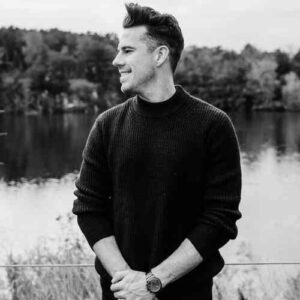When it comes to choosing where you’re going to get dry needling done, there are a few things that are important to consider. First your provider needs to be skilled, second they need a lot of experience, and third (by a long shot) they need to be convienent. Unfortunately in the state of Florida, the first two – skill and experience will be hard to come by if you’re seeking out dry needling from a physical therapist anytime in the next 40 years.
Who can provide dry needling in the State of Florida?
So the good news is that you have direct access to dry needling from a number of providers. Acupuncturist have been providing dry needling for 30+ years. Chiropractors have been able to dry needle since at least 2010 and lastly physical therapist just passed legislation to dry needle with only 52 hours of legislation in the summer of 2020.
Let’s dive into the statistics and do some math so you can make an informed decision.
Where to get dry needling in Florida
Let’s be clear, the 52 hours of education a physical therapist receives in dry needling isn’t much when it comes to performing dry needling. It’s hard to get good at dry needling with such little experience, so just remember that when you’re choosing convienece over experience. Let’s get into the numbers and compare the experience of your average dry needler anywhere in the country to your best option to get dry needling in Tampa, FL – Dr. Josh Hanson, DACM.
Your average physical therapist at best performs 0-3 dry needling treatments a day
Let’s review a recent survey among physical therapists practicing dry needling, titled, “A survey of American physical therapists’ current practice of dry needling: Practice patterns and adverse events”.
Your average physical therapist only performs an average of 0-3 dry needling treatments per day. So on a busy week for a physical therapist, at best they have performed 15 dry needling treatments. Over a year your average physical therapist at best performs 750 dry needling treatments. On the low end, it’s half or less of that.
It’s really hard to get good at anything when you don’t do it often, but when it comes to hunting for millimeter sized changes in muscle tissue and sticking a needle in it, that task becomes even more difficult. Compound that with the fact they only require 52 hours of education over 3 weekend course and you have yourself setup to receive dry needling from a highly inexperienced new practictioner. Sadly after they complete these courses, they are left to run in the wild with no clinical supervision of more experienced practitioners either.
Let’s look at Dr. Josh Hanson, DACM’s experience in Dry Needling
First, I had more than 52 hours of education in needling before my first year of acupuncture school was over, long before I began treating patients in our student clinic under the supervision of vastly experienced practitioners whom I could learn from. But let’s ignore that fact and move on to current times and do a little math. Compound that with the fact I am injection certified and trained in trigger point injections, which are far more advanced and out of the scope of all physical therapist.
On the ow end I treat 15 patients a day and have done so for 6+ years in my own practice, not counting 3 years I spent in student clinic directly treating the same amount of patients per day. So on a normal week, I perform about 75 treatments and close to 4000 per year. In total I’ve performed over 30,000 procedures on patients. You get pretty good when you do anything 30,000 times.
Your average physical therapist would need to work for 40 years to get the amount of experience Dr. Josh Hanson, DACM has today, February 9, 2021.
So before you choose convenience over experience remember that the needle counts… unfortunately this isn’t something like massage where there is a lot less room for error.
The good news is that for the most experience and best dry needling in Tampa, FL you have direct access to Dr. Josh Hanson, DACM. All you have to do is click the book now button below.
References:
- 1) A survey of American physical therapists’ current practice of dry needling: Practice patterns and adverse events https://pubmed.ncbi.nlm.nih.gov/32932050/


